Widdringtonia schwarzii
Widdringtonia schwarzii (Marloth) Mast.
Family: Cupressaceae
Common names: Baviaanskloof cedar, Willowmore cedar (Eng.); Baviaanskloofseder (Afr.)
SA Tree No: 21
Introduction
Widdringtonia schwarzii is an ancient giant from the Baviaanskloof Mountains, often with a gnarled trunk and spreading branches, which can reach 40 m in height. This slow maturing tree was historically used for building timber and is at present under threat from runaway fires.
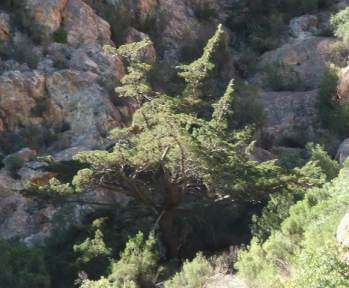
Description
Description
Widdringtonia schwarzii is much larger than its cousin W. cedarbergensis, and grows to a height of 17-20 m on average. The bark is red-grey, thin and fibrous; leaves are flattened, ovate, grey-blue, and darker than those of W. nodiflora, the mountain cypress. Juvenile leaves are narrow and needle-like and are spirally arranged. Fruits are in the form of cones, with male and female cones borne on the same plant. Male cones are very small, up to 2 mm long, and are produced in autumn.
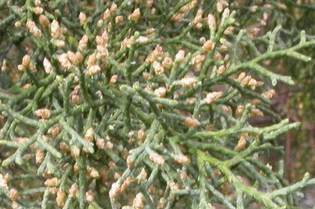
Female cones are dark brown, with rough, warty scales. They develop in autumn and remain on the tree for almost three years before the seeds are released during late summer.
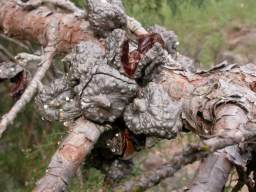
As a result, cones can be found in various stages of development on the tree, all year round. Seeds are black-brown, ovoid and broadly winged.
Conservation Status
Status
The Baviaanskloof Cedar is classified as Near Threatened in the recent Red Data List assessments carried out in 2006 for the IUCN. This is as a result of too frequent wild fires in the area and the clearing of land for commercial farming. Off-road tracks have been identified as a possible future threat to this species unless strictly controlled, as 4 x 4 vehicles disturb habitats and destroy the fragile saplings.
Distribution and habitat
Distribution description
Widdringtonia schwarzii occurs in the Baviaanskloof and Kouga Mountains in the Eastern Cape. It is endemic to this area and can be found in rocky ravines and growing on steep cliff faces in kloofs. This tree prefers elevations of 70 - 1220 m although most of the accessible specimens have been cut down, so trees of any substantial size are confined to remote rocky kloofs.
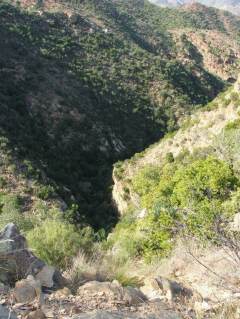
Derivation of name and historical aspects
History
The genus Widdringtonia was named after Edward Widdrington, a Royal Navy captain and a conifer botanist of the late 1700s and early 1800s. The species name of schwarzii was named for Friedrich (Fritz) Schwarz, 20th century cactus collector. There are 2 other species in this African genus, W. cedarbergensis and W. nodiflora.
Uses
Use
The wood is pale yellow, aromatic, remarkably durable and resists decay. It was a popular wood for building and was used for almost all the woodwork needed by the early settlers in the area, to build houses, fences, telegraph posts and furniture. As it is a slow-growing species, the Willowmore cedar is an ideal subject for a Bonsai specimen.
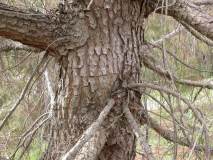
Growing Widdringtonia schwarzii
Grow
Treat the seeds of Widdringtonia schwarzii with Instant Smoke Plus Seed Primer to aid with germination. Seeds should be sown in autumn when the night time temperatures have dropped to 15 ºC. Sow the seeds 1 mm deep in a peaty seed sowing mix, and germination will take approximately 30 days. Once germinated, seedlings should be transplanted into larger containers and are best grown on in semi-shade. Widdringtonias are susceptible to the root fungus Phytophthora cinnamomi, thus sterile, well-drained sandy soil is recommended when potting up.
References
- Coates Palgrave, K. 1977. Trees of southern Africa, edn 1. Struik, Cape Town, Johannesburg.
- Leistner, O.A. (ed.). 2000. Seeds plants of southern Africa : families and genera. Strelitzia 10. National Botanical Institute, Pretoria.
Credits
Carly Cowell
Millennium Seed Bank Project
Kirstenbosch National Botanical Garden
April 2007
Plant Attributes:
Plant Type: Tree
SA Distribution: Eastern Cape
Soil type: Sandy, Clay, Loam
Flowering season:
PH: Acid, Neutral
Flower colour: Brown
Aspect: Full Sun
Gardening skill: Easy
Special Features:
Horticultural zones









Rate this article
Article well written and informative
Rate this plant
Is this an interesting plant?
Login to add your Comment
Back to topNot registered yet? Click here to register.